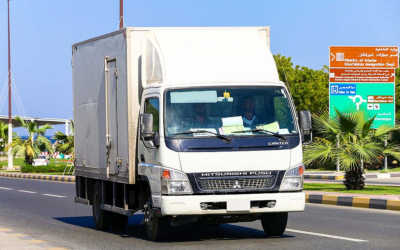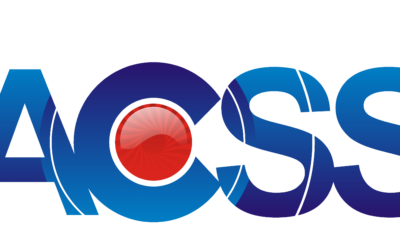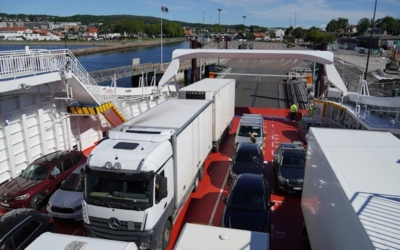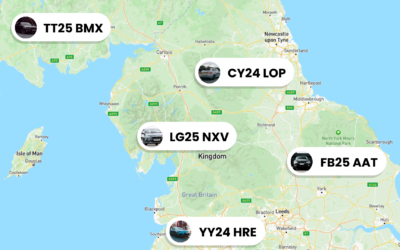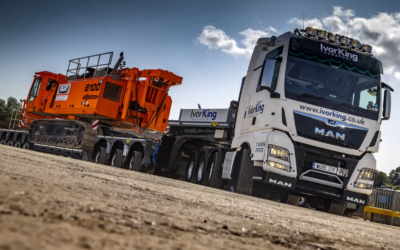How Delivery Companies Use Fleet Management Software
Introduction — Why fleet management software matters for delivery companies
If you run a delivery fleet, you already know the pressure: tight ETAs, rising fuel bills, shrinking margins and demanding customers. That’s where fleet management software comes in. At its core, this technology gives you visibility and control — real-time vehicle locations, automated dispatch, driver tools and analytics that turn messy operational data into actionable decisions.
Think of fleet management software as the nervous system for your delivery operation. It connects telematics, route optimisation, mobile apps and back-office systems so you can cut unnecessary miles, reduce downtime and improve customer satisfaction. For busy fleet managers, that clarity translates into better KPIs and calmer days.
In this article I’ll walk you through the core features delivery teams rely on, the measurable benefits you can expect, integration and data considerations, and the best practices that help you scale. If you’re evaluating new tech or just trying to get more value from what you already have, this should help you prioritise the right moves.
Core features delivery companies rely on
Dispatch, route planning, and dynamic re-routing
Efficient dispatch is the heart of any delivery business. Modern fleet management software automates multi-stop route planning and accounts for time windows, vehicle capacity and driver skills. Dynamic re-routing is the game-changer: when traffic, cancellations or urgent pickups occur, the system reshuffles jobs in seconds rather than clogging a dispatcher’s inbox.
That means fewer missed slots and less idle time. For managers juggling high-density routes, automated planning reduces manual errors and frees the team to focus on exceptions — rather than babysitting spreadsheets.
Telematics, GPS tracking, and vehicle diagnostics
Real-time GPS Tracking and telematics deliver position, speed, fuel usage and engine fault codes straight to your dashboard. This isn’t just for knowing where vans are; it’s for spotting problems before they escalate. A sudden rise in fuel consumption or a recurring engine code can trigger a maintenance alert so you avoid costly breakdowns.
Combine telematics data with predictive maintenance (see Traknova’s guide on Predictive Maintenance for Fleets) and you’ll reduce downtime dramatically.
Driver tools and proof-of-delivery features
Drivers need fast, reliable mobile tools. The best fleet management software offers in-cab navigation, barcode and QR scanning, electronic proof-of-delivery (POD), photo capture and two-way messaging. These features speed up handovers and give customers accurate ETAs and delivery confirmations — a direct boost to trust and NPS.
Operational benefits and measurable outcomes
Cost reduction and efficiency gains
When you trim unnecessary miles and optimise routes, the impact is immediate. Fuel costs fall, vehicle wear decreases and maintenance becomes more predictable. Many delivery operations see a measurable drop in cost-per-delivery after implementing fleet management software — sometimes by double-digit percentages when combined with driver coaching and smart routing.
Improved delivery performance and customer experience
Accurate ETAs, live tracking links for customers and automated notifications reduce calls to your contact centre and cut complaints. Visibility also helps you balance workloads and manage exceptions faster, so on-time delivery rates improve. That matters — because in a competitive market, reliability is a top differentiator.
Safety, compliance, and risk reduction
Use telematics to monitor harsh braking, speeding and idle time, then coach drivers proactively. Adding fleet-facing safety hardware — for example Dash Cameras — supports investigations and reduces fraudulent claims. Also consider data-backed compliance tools to simplify reporting for regulators and insurers.
If you’d like to see these improvements in action, you can Book demo with Traknova — a short walkthrough will show how the platform converts telematics and routing into real savings and improved service levels.
Implementation, integration, and data considerations
Integrating with TMS, WMS, and e-commerce systems
Delivery workflows rarely live in one system. Your order management, warehouse and last-mile tools must exchange data seamlessly. Look for fleet management software with open APIs that synchronise orders, statuses and inventory across systems so dispatch is always working from the latest data. Linking into e-commerce platforms lets you automate customer-facing tracking updates too.
Data security, privacy, and governance
With increasing connectivity comes responsibility. Protect telematics and driver data with strong access controls, encrypted transmissions and clear retention policies. If you’re operating in regions covered by GDPR or CCPA, ensure your vendor supports compliance workflows and can respond quickly to data subject requests. For practical security steps, check Traknova’s Fleet Cybersecurity Guide.
Deployment options and hardware choices
Decide between OEM telematics or aftermarket devices based on your fleet age and replacement cycle. Cloud platforms dominate for their scalability and automatic updates, but on-premise can make sense where connectivity is restricted. Also evaluate network options — LTE, LTE-M or NB-IoT — depending on data needs and coverage.
Best practices, KPIs, and preparing for the future
Essential KPIs to track and benchmark
Focus on metrics that tie directly to business outcomes: on-time delivery rate, cost-per-delivery, miles-per-stop, route adherence and vehicle utilisation. Use dashboards to spot trends and set realistic benchmarks for improvement. Monitoring these KPIs regularly helps you prove ROI to leadership and refine processes over time — a key step when rolling out new technology.
Adoption and change-management tips
Start with a pilot that targets one depot or route cluster. Train drivers and dispatchers on the mobile app, set realistic performance goals and use incentives to encourage adoption. Gather feedback, iterate and then scale. For guidance on rolling out telematics across your team, see the Telematics Adoption Playbook.
Future trends delivery fleets should prepare for
Be ready for faster adoption of electric vehicles and the logistics that come with charging and range planning — Traknova’s Fleet Electrification Checklist is a good starting point. Expect AI-driven routing to become more common, and more IoT sensors for load, temperature and cargo security. Staying adaptable will keep your operation competitive.
Conclusion
For delivery companies, fleet management software is no longer optional. It’s the toolkit that lets you scale reliably, reduce costs and keep customers happy. By focusing on the right features — smart dispatch, robust telematics, and driver-facing tools — and by planning integrations and governance up front, you’ll see measurable improvements quickly.
Ready to see how this looks on your routes? Schedule a walkthrough to explore features tailored to delivery operations and learn how Traknova turns data into savings and better service. Book demo or Contact us to arrange a consultation.
FAQs
How quickly can we expect ROI from fleet management software?
Most delivery fleets start seeing operational improvements within 3–6 months: reduced miles-per-delivery, fewer late deliveries and lower fuel spend. Full ROI depends on fleet size, current inefficiencies and how fast you adopt recommended workflows.
Do we need to replace our current telematics hardware?
Not necessarily. Many platforms support both OEM and aftermarket devices. Evaluate device compatibility, installation cost and the features you need (engine diagnostics, CAN-bus access, camera integration) before deciding.
Can the software handle variable delivery windows and ad-hoc orders?
Yes — modern solutions optimise for time windows and can re-route dynamically when new orders come in or priority shipments appear. This flexibility is what makes fleet management software so valuable for busy last-mile operations.
We’d love your feedback. If this article helped, please share it with colleagues and on social media — it really helps other fleet managers find practical advice. What’s your biggest delivery challenge right now: routes, retention, or rising costs? Reply below or contact us — we read every message.
Book a demo: Ready to see a tailored demo? Book demo with Traknova and let’s map improvements on your fleet within a single session.




